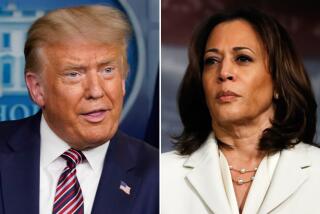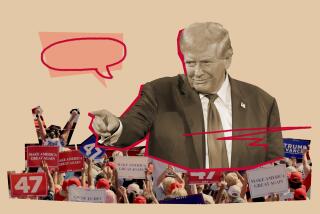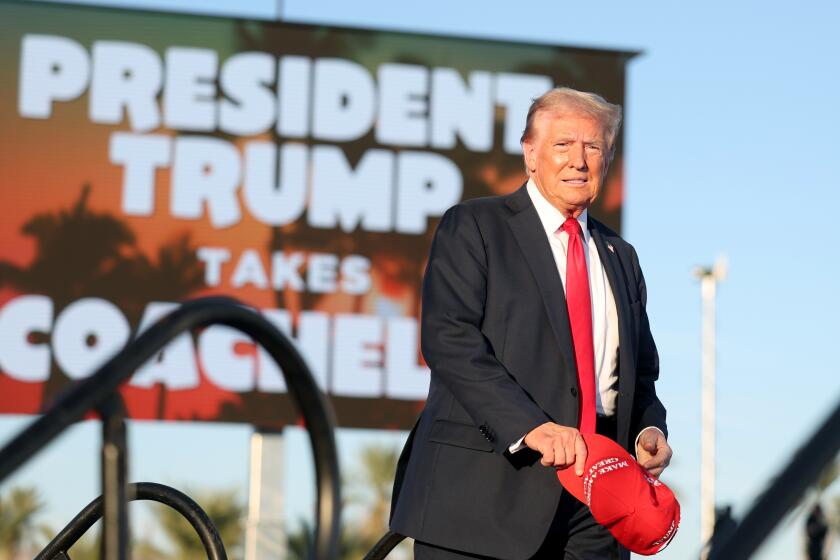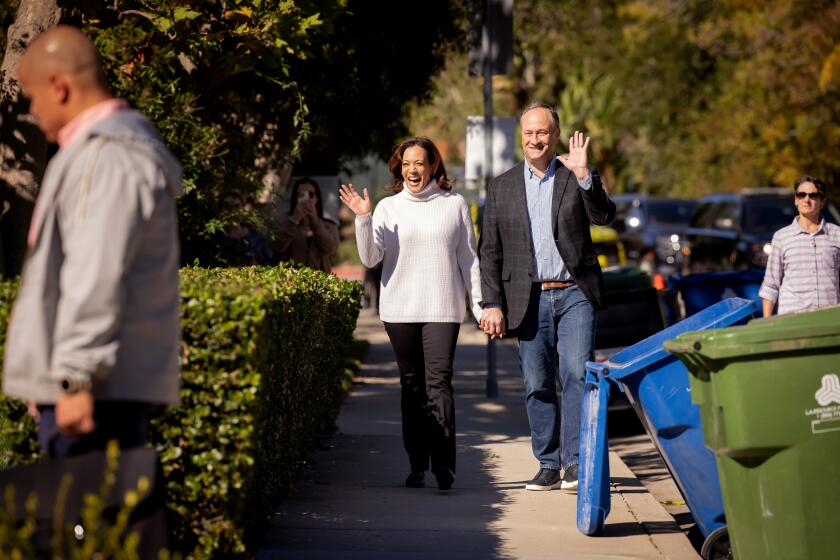An Issue Drawn in Black and White
Maybe a seasoned legislative staffer I know has it right: Deciding what to do about affirmative action is like buying a VCR a decade ago. “You had two choices--Beta or VHS,” he recalls. “There was no middle ground, no compromise.”
You either keep affirmative action with all its race, ethnic and gender preferences, or you junk it entirely, this Democrat says. There’s no middle ground.
The idea being floated by Clinton Administration officials, for example, to keep racial preferences in federal contracting, but do some tinkering to exclude the wealthy, just won’t fly on either side.
As long as there’s any system of favoring one group over another because of race or gender, it’s unacceptable to sponsors of a proposed 1996 California ballot initiative.
“We’re abolitionists on that,” says co-author Glynn Custred, a Cal State Hayward anthropology professor. “We don’t see any way in a society like ours that you can have a color-coded legal system. That’s what the 1964 Civil Rights Act was all about. Because we have a color-conscious society, we need to have a colorblind legal code.”
On the other side, about as far away as you can get, is Assembly Speaker Willie Brown (D-San Francisco). A product of segregated rural Texas in the 1940s, Brown stoutly defends racial preferences as still needed to redress 200 years of white discrimination against blacks and to assure that America does not slip back into bigotry. The Speaker recently told a state party convention he is “not interested at all” in modifying affirmative action “to make it more palatable.”
In fact, Brown indicated in a public debate last week that he’d like to extend preferences to gays, lesbians and the disabled. “I think we ought to be about including sexual orientation,” he said. “I think we ought to be about protection for the handicapped. . . .
“And when I’m comfortable we’ve done all of those things, then I’ll get about making myself President.”
*
The audience laughed at this presumably facetious latter comment. But there were scattered boos a time or two when Brown couldn’t resist using his acid tongue. “Your principles are cockeyed,” he told Los Angeles businessman Errol Smith, an African American who thinks racial preferences are stigmatizing.
Turning to philosopher Thomas Wood, the initiative’s other co-author, Brown said: “Your position is so flawed with a lack of data (and) a lack of clarity of thought that it comes from a space and place in this nation that’s very, very troubling. It’s what put in place the Jim Crow laws. . . . It’s a reaffirmation of every single, solitary, discriminatory sanction that this country ever tolerated. And you ought to re-examine yourself.”
The few boos, however, were drowned out by applause and whoops from the 200 students and political activists who witnessed the 2 1/2-hour debate in a lecture hall at McGeorge Law School in Sacramento.
This, for sure, was not a cross-section of the California electorate. A recent Times poll found that two-thirds of the voters favor the proposal to forbid preferential treatment based on race or gender in public hiring, contracting and university admissions. But the debate did represent a synopsis of arguments expected to dominate a racially divisive initiative campaign.
“I apologize for any darkness I may have visited on any aspect of this debate,” a momentarily contrite Brown said in his closing statement. But this debate is just beginning, and it probably will get uglier.
*
Wood, as dry as Brown was entertaining, kept re-emphasizing one theme: “As a matter of simple logic, it’s impossible to give a preference to an individual on the basis of race, sex or ethnicity without discriminating against someone else. If prohibiting (this) discrimination is not civil rights, I don’t know what civil rights is.”
But his side danced around demands for proof of reverse discrimination. “Give me some evidence,” Brown challenged. “There isn’t any,” Custred replied, quickly adding: “I don’t have any here with me tonight.” The audience groaned.
Assemblyman Louis Caldera (D-Los Angeles), a member of Brown’s debate team, realizes this fight will not be decided by statistics. It will turn on raw emotions and the electorate’s sense of fairness. Unlike Brown, he wants to make affirmative action more palatable.
“Many complain it’s unfair for the son of a wealthy black doctor to take advantage of an affirmative action university admissions program. Fine,” he said. “And let’s set limits on how long firms are allowed to participate in set-aside (contracting) programs. . . . But let’s do it within the context of reforming existing race- and gender-conscious affirmative action.”
Caldera thinks he can combine VHS and Beta. Few others in the Capitol still believe that’s possible.
More to Read
Get the L.A. Times Politics newsletter
Deeply reported insights into legislation, politics and policy from Sacramento, Washington and beyond. In your inbox three times per week.
You may occasionally receive promotional content from the Los Angeles Times.










